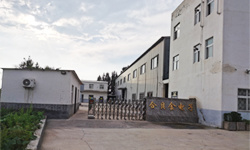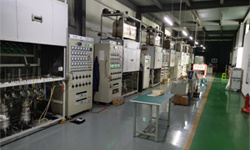
Blog
Construction of X-ray Tube and Real CT Tube
2022-01-10
X-ray tube, referred to as the tube. Common imaging examinations such as photography, fluoroscopy, mammography and CT are the core components that need to be used. Although the uses of the equipment are different, their functions are consistent and their structures are similar.
(1) The cathode (electron gun) is to generate electrons and focus the electron beam. The tungsten filament is spiral-shaped and is heated by the current tungsten filament to release free electrons.
The cathode is actually similar to an incandescent lamp. It is made of a tungsten filament. When an electric current passes through it, the filament heats up and produces a group of free electrons, called space charge. As the filament current increases, the filament produces more and more electrons, but when the limit is reached at 1000ma, the space charge becomes so high that no more electrons can overflow from the filament. This limitation is called the space charge effect, so 1000ma is the limit of ma that can be used in the tube. Many tubes actually have two filaments, called double focus tubes, small focus is only suitable for small doses of photography, because of its small heat capacity, large current easy to fuse the filament. The small focus is focused into a tightly arranged x-ray beam at the target surface, which has a higher spatial resolution than the image obtained by the large focus.
Large focus can meet the clinical demand for high-dose photography.
The size of the focus is located in the focus mask of the cathode. The function of the focus mask is to focus the electron beam. The free electrons are negatively charged. The focus mask is also negatively charged. The same poles repel each other and compress the free electrons into a tight electron beam. This is part of the reason why the image has high spatial resolution or clarity.
(2) Anode (metal target): emits X-rays. The anode target is usually made of metal materials with good heat conductivity and high melting point, such as copper, diamond, nickel, iron, aluminum, etc.
Anode according to the mechanism is divided into rotating anode and fixed anode two categories:
The fixed anode target surface is stationary, which means that all heat is concentrated in a small area of the anode, so the heat capacity of the fixed anode bulb is very low, which means that the fixed anode bulb is not suitable for high-dose photography.
The target surface of the rotating anode is actually a rotating disc, which spreads the electrons emitted by the cathode to a larger area, which significantly increases the heat capacity of the bulb. The design of the rotating anode is relatively complicated, but it has a larger heat capacity., Can meet the needs of clinical high-dose exposure.
The rotation of the rotating anode depends on the induction motor, which rotates the rotor to drive the target surface without direct contact with the anode. The induction motor includes two parts: the stator and the rotor
The stator is a ring of electromagnets around the rotor. The electromagnets are activated to generate a rotating magnetic field, which urges the rotation of the rotor.
(3) Glass shell: The glass shell material requires both structural strength to maintain the high vacuum in the tube and small absorption of X-rays. Generally, it is a Lindemann glass composed of beryllium metal and beryllium borate lithium.
These are the main components of the x-ray tube.
The progress of science and technology has promoted the development of modern medical treatment, in which CT, as an imaging diagnostic equipment widely used in clinical examination, has an unshakable position in imaging.
As the core component of CT tube, its importance can be imagined, multi-slice spiral CT continuous uninterrupted scanning, X-ray dose is large, and thus requires CT tube has a higher thermal capacity.
The improvement of heat capacity requires the continuous improvement and improvement of the structure of the ball tube material and the rotating anode.
Small (micro) focus, large capacity, high frequency and high voltage and its stability, high-speed rotating anode (low noise), filament emission consistency, etc. have become the development direction of the bulb.
Previous Page
Next Page
Previous Page
Next Page
[Related professional knowledge] X-ray tube
2024/08/02
Introduction of X-ray tube related terms
2023/11/01





